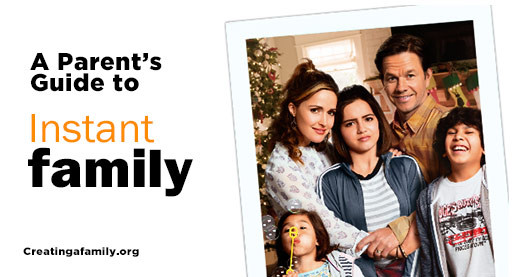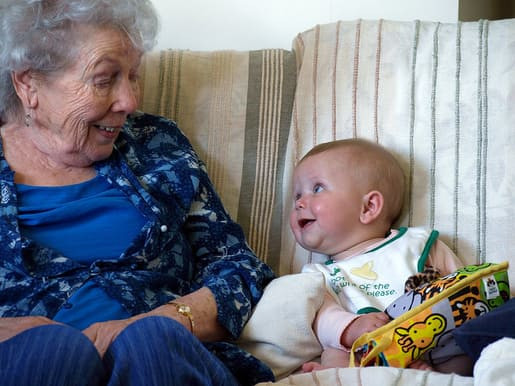In October, I had the opportunity to attend a special screening of Instant Family, a movie that dives into the world of foster care adoption. This film is a genuinely heartwarming and feel-good experience, and it sets out to realistically portray the journey of foster care adoption in the United States.
 How to become a family through foster care
How to become a family through foster care
What made this screening even more special was the presence of the director, Sean Anders, known for his work on the Daddy’s Home franchise. Following the movie, he engaged in a Q&A session, sharing insights into his own family’s experiences, which served as the loose inspiration for Instant Family. It was fascinating to hear about their dedication to crafting authentic characters and moments that truly reflected the foster care adoption process.
I want to be careful not to give away too much of the plot, as I truly believe Instant Family is a movie worth seeing. The central message is powerful: foster care adoption is a viable path to family for ordinary people, not just those with extraordinary capabilities. The movie resonates deeply by portraying the often clumsy mistakes and “what were we thinking?” moments that are universally relatable to anyone who has adopted. However, before you rush out to see it, especially if you’re considering bringing foster or adopted children, there are some important aspects to consider.
Before delving into potential triggers that parents should be mindful of when watching Instant Family, I want to highlight the movie’s strengths and what it portrays accurately about foster care adoption. Here are five standout aspects that Instant Family gets right:
5 Reasons Why Instant Family Resonates with the Reality of Adoption
1. Humor as a Real-Life Coping Mechanism
While Mark Wahlberg is known for his action roles, his comedic timing in Instant Family is a delightful surprise. The chemistry he shares with Rose Byrne, who plays his wife, is electric, driving much of the movie’s humor. Their lighthearted approach to navigating the initial chaos and their own cluelessness in the face of parenting challenges are incredibly relatable. The witty, often blunt, dialogue keeps the tone grounded and engaging without becoming overly sentimental. Adding to this comedic mix are Octavia Spencer and Tig Notaro, whose dynamic infuses scenes with both laughter and tears.
Humor is undeniably a crucial coping mechanism in the world of parenting, and especially in foster care adoption. Who hasn’t experienced that almost involuntary urge to laugh when a child is in the midst of a full-blown tantrum? Sometimes, that moment of levity is exactly what’s needed to diffuse tension and shift the mood. Instant Family captures this perfectly, showcasing humor not as a dismissal of serious issues, but as a necessary tool for resilience.
2. The Vital Role of In-Person Support Systems
The foster care support group depicted in Instant Family is a brilliant representation of the communities that are essential for adoptive parents. This group is a microcosm of shared experiences, where individuals laugh together, offer gentle ribbing, cry in solidarity, and cheer each other on through the ups and downs of adoption. Crucially, they also provide honest feedback, even when it’s difficult to hear.
The film underscores the critical need for a supportive “village.” While not everyone has access to a local, in-person support group, the movie effectively illustrates the power of community. We often discuss the importance of support systems, and online communities like Creating a Family are invaluable lifelines for many. Instant Family reinforces the undeniable need for a safe and reliable network to lean on, highlighting the emotional sustenance and practical advice that such groups offer.
3. Authentic and Committed Foster Care Case Workers
The dynamic between Octavia Spencer and Tig Notaro’s characters, the foster care case workers, is not only entertaining but also deeply insightful. They deliver a blend of humor and hard truths, offering crucial advice and warnings about the challenges of foster care adoption. These characters skillfully weave nuggets of wisdom into their witty banter, making the often-difficult truths more palatable and impactful.
Instant Family accurately portrays the immense value of a case worker or social worker who is genuinely dedicated to preparing prospective parents, guiding them through the complexities, and remaining steadfast through both triumphs and setbacks. The movie effectively captures the emotional labor of case workers, highlighting the heartbreak and joy they experience daily as they support families and children in the foster care system.
 Instant Family through Foster Care Adoption is Wonderful
Instant Family through Foster Care Adoption is Wonderful
4. The Undercurrent of Infertility in Adoption Journeys
While Instant Family primarily focuses on foster care adoption, it subtly addresses the issue of infertility, a significant factor for many who turn to adoption. The subplot involving the main characters’ sister and brother-in-law portrays their struggles with infertility treatments, the emotional rollercoaster of hormones, and the desperation to explore alternative paths to parenthood. This storyline is handled with sensitivity and realism.
It’s a known fact that a large percentage of adoptive parents, around 80%, come to adoption after experiencing infertility. Instant Family acknowledges this reality, weaving in the couple’s pain and their journey through it with authenticity. This subtle inclusion adds another layer of depth to the narrative, resonating with a significant portion of the audience.
5. Addressing Misconceptions About Adoption from Extended Family
Instant Family tackles head-on the often-misinformed beliefs and stereotypes that extended family members may hold about foster care adoption and foster children. Without giving away specific plot points, the movie effectively confronts these myths and prejudices. The direct challenges to these misconceptions are both empowering and emotionally resonant.
What’s particularly well-done is that these moments of education aren’t isolated incidents. Instead, the movie portrays the ongoing, layered nature of educating those around us about adoption. Just like in real life, there are significant moments where ignorance is directly addressed, but there are also countless smaller, everyday interactions where adoptive families subtly educate others. Instant Family captures both types of educational moments, reflecting the reality of life for adopted families.
 Extended family need to adjust to foster children too.
Extended family need to adjust to foster children too.
Potential Emotional Triggers in Instant Family for Adoptive Families
Having learned through experience, I recognize that even well-crafted stories can contain elements that trigger emotional responses, especially for those with lived experiences related to the narrative. While Instant Family is a commendable film, it’s crucial for parents considering taking their foster or adopted children to be aware of potential triggers. Every child is different, and their ability to process challenging themes varies.
As parents, you are the best judge of your family’s dynamics and your child’s emotional resilience. The following points are not exhaustive but represent some of the themes that struck me as potentially sensitive and worth considering before viewing Instant Family with children who have experienced foster care or adoption.
-
Parentification of the Eldest Sibling: The movie portrays the eldest sibling using a different language to manage the younger children’s behavior. This could be triggering for children who have been in similar positions of responsibility, as it may remind them of past burdens and lack of childhood.
-
Unresolved Issues with the Birth Mother: The film touches upon the lack of closure in conversations with the birth mother, both regarding the initial placement of the children and the finalization of the adoption. This absence of resolution could resonate with children who still grapple with unanswered questions about their own birth family and history.
-
Feelings of Re-Abandonment: Even within the context of a feel-good adoption movie, the underlying fear of re-abandonment by the birth mother might surface. For children who have experienced multiple placements or losses, this theme could be particularly sensitive.
-
“Unicorns and Rainbows” Viewpoints of Prospective Parents: The movie humorously highlights the sometimes naive expectations of the prospective adoptive parents. While funny for some, this portrayal could be upsetting for children who may not fully grasp that adoptive parents need to prepare for the complexities of parenting children with trauma histories.
-
Honeymoon Period and its Inevitable End: Instant Family depicts the initial honeymoon phase in a new placement and the subsequent challenges when reality sets in. For children who have experienced this cycle, witnessing the parents’ struggles and conversations could be emotionally difficult and trigger memories of their own experiences.
-
Boundary Testing by the Teenager: The teenage character’s boundary-testing behaviors, while typical for adolescence, could be triggering for parents who are currently navigating similar challenges. Conversely, for teens watching, it might be a painful point of identification, reflecting their own struggles with trust and attachment.
-
Trauma-Related Behaviors in Younger Siblings: Some of the younger siblings’ behaviors, intended for comedic effect, are rooted in trauma responses. While presented humorously, these scenes could be poignant and potentially difficult for viewers who recognize similar behaviors from their own early days of fostering or adopting.
-
Fear of Temporariness vs. Permanence: The movie skillfully captures the push-pull dynamic of foster care, the simultaneous fear of impermanence and permanence felt by both the children and the prospective parents. This central tension could resonate deeply with foster children who have learned to guard their hearts and struggle to trust in the stability of a new home.
Final Thoughts: Is Instant Family Worth Watching?
While I’m not a film critic in the traditional sense, focusing instead on the realities of foster care adoption, I can confidently say that Instant Family is a movie with a powerful message. The star power of Mark Wahlberg and Octavia Spencer certainly doesn’t detract from the film’s sincerity. More importantly, this heartwarming and “based on real life” movie succeeds in showing both the joys and challenges of building a family through foster care adoption.
Personally, I’ve decided that while I highly recommend Instant Family, I will wait to watch it with my own adopted daughters in the comfort of our home rather than in a theater setting. This will allow us to pause, discuss, and process the movie together in a safe and familiar environment.
I sincerely hope Instant Family achieves significant box office success, particularly during National Adoption Month, as it shines a light on the critical need for permanent, loving homes for children in foster care. I plan to see it again in theaters with my support network of fellow adoptive and foster moms.
Are you planning to see Instant Family in theaters? Will it be a family outing, or a night out with your partner or friends?
Explore More Resources from Creating a Family:
Image credit: <a href="https://www.instantfamilymovie.com/home/">https://www.instantfamilymovie.com/home/</a>, <a data-rapid_p="37" data-track="attributionNameClick" href="https://www.flickr.com/photos/ocparks/" title="Go to OCParks_CA's photostream">OCParks_CA</a>,<a data-rapid_p="59" data-track="attributionNameClick" href="https://www.flickr.com/photos/youngthing/" title="Go to youngthing's photostream">youngthing</a>

